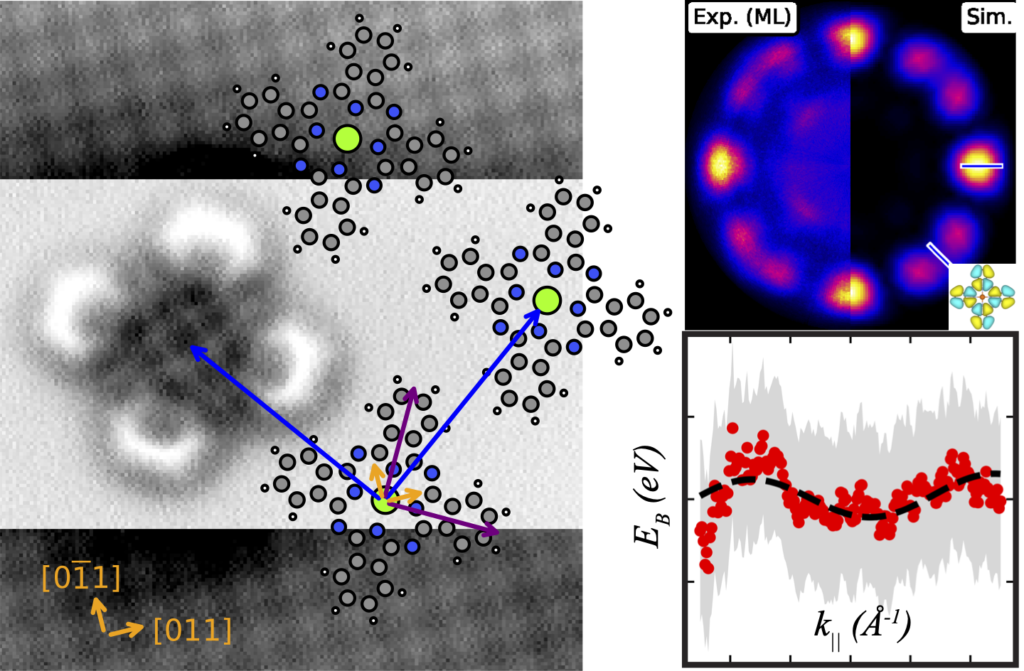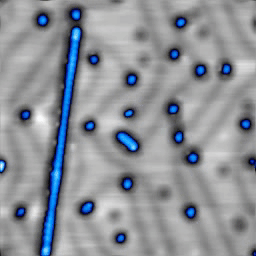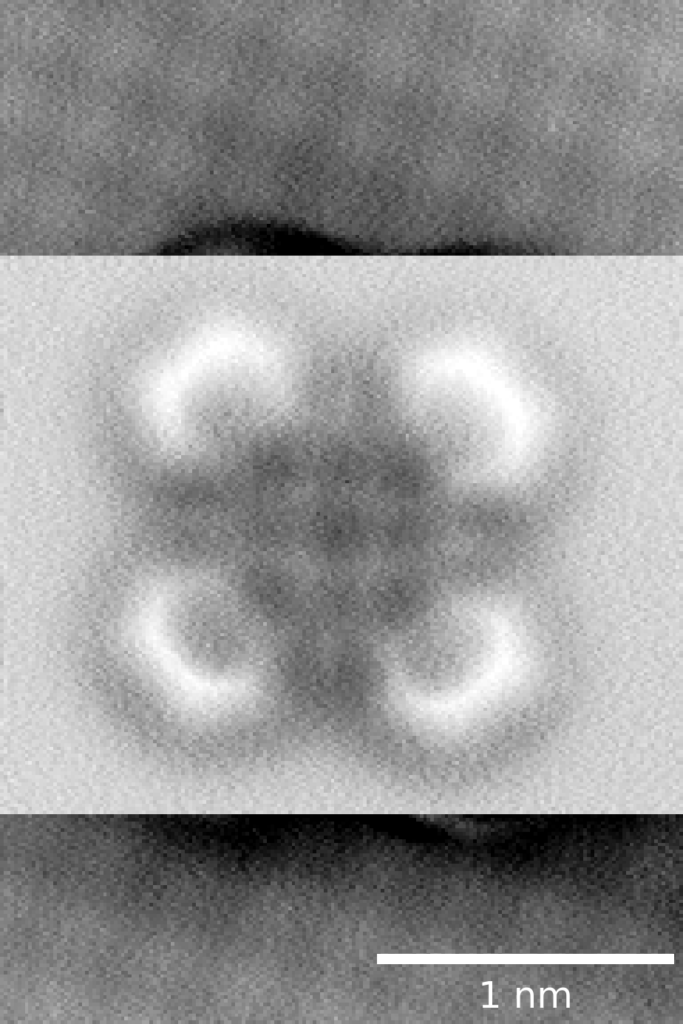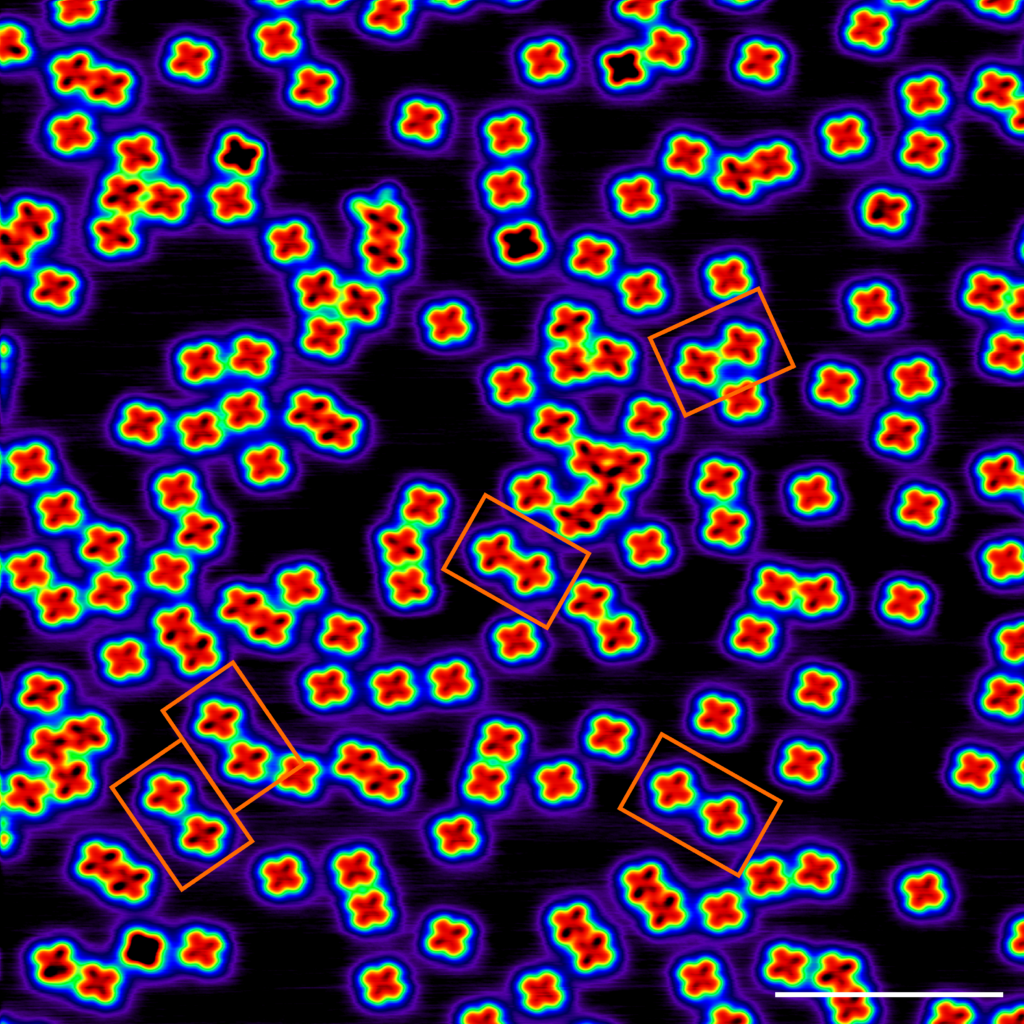Another installment in the annals of the bullying of the Shockley surface state, this time the trick isn’t exotic adatoms or massive molecular weight, just a 120° tilt of hexaazatriphenylene (HAT) ligands that converts an achiral lattice into a pair of enantiomeric 2-D metal–organic frameworks. The result: chirality-imposed scattering potentials that lift degeneracies and open ΔE ≈ 80 meV gaps in the Ag(111) two-dimensional electron gas while leaving the global periodicity intact.

Key take-aways
- Structural chirality prints straight onto k-space
nc-AFM resolves two co-existing enantiomers, pinwheel (PW) and “Y” phases, built from Cu–N coordination and an approximately 6° molecular cant relative to the substrate plane. STS maps acquired at 5K reveal the surface-state band dispersion reconstructed by these potentials: back-folded bands, avoided crossings and a pronounced energy gap at the new Brillouin-zone boundary. - No new chemistry, only symmetry
The gaps appear without changing the molecular building blocks; tilting the HAT plane breaks mirror symmetry and generates the required chiral scattering. - Two tools, one story
Electronic plane-wave expansion (EPWE) calculations feed the experimental topographies into a scattering potential and reproduce the experimental dI/dV linecuts almost quantitatively. DFT overlays the intrinsic MOF bands, showing that substrate hybridisation broadens the pyrazine and shallow-pore states but leaves the chirality-imposed gap untouched.
Why it matters
Tuning interface electronic properties usually means adding heavy metals, strain or strong correlations. Here the knob is symmetry engineering at the level of a single torsion angle, giving a gap that survives room-temperature disorder and is addressable by STM patterning. For anyone chasing chiral superconductivity, topological Bloch modes or valley-splitting without magnetic fields, that’s a tantalising new dial to turn, keeping in mind that the circumstances of its rotation are a bit rarefied, and the organics that underpin it aren’t typically associated the materials systems that carry those clusters of keywords.
Acknowledgments
The project has long roots: Sebastian synthesised the first and final HAT batch in-house back in 2019, but that’s a lot of molecules when you image them by the hundred. The low-temperature data were collected during Julian’s PhD tenure, during the LHe heyday when the coarse motor piezos had been beated back into shape (thanks Ben). Bernard, now a postdoc at LBNL, nevertheless kept pushing the modelling forward to get this across the finish line.
Tuning Interface Electronic Properties via Chiral Two-Dimensional Metal-Organic Frameworks (2025). Small Structures. https://doi.org/10.1002/sstr.202500422




